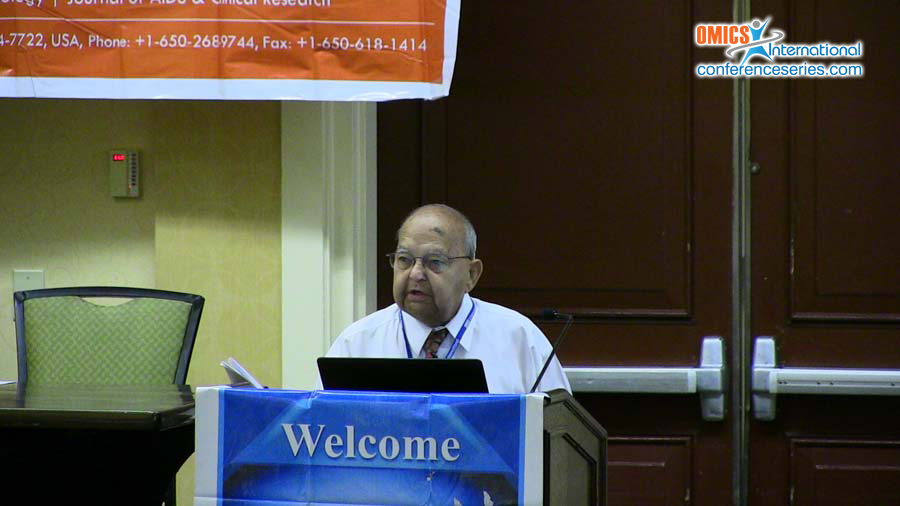
Dharam Ablashi
HHV-6 Foundation,KHG fiteBac® Technology,USA
Title: Emerging Human Pathogens: Human Herpes Virus-6 (HHV-6) & Human Herpesvirus-7 (HHV-7)
Biography
Biography: Dharam Ablashi
Abstract
HHV-6 and HHV-7 were discovered in 1986, and 1990 respectively. They are acquired in early childhood, and after primary infection become latent. Their prevalence in the various populations throughout the world is VARIABLE (> 44->95%). Once they reactivate, they play an important role in pathogenesis of various diseases. HHV-6 is associated with neurological and non-neurological diseases. HHV-6 is re-classified as HHV-6A, and HHV-6B. HHV-6A is associated with multiple sclerosis, mood disorders (Bi-polar disease), myocarditis, and cardiac myopathy, and gliomas. Similarly, HHV-6B infection has been found in heart disease (myocarditis, arteriosclerosis, heart failure), idiopathic pneumonia, MTLE, status epilepticus, lymphadenopathy, Hodgkin’s disease, (nodular sclerosis). HHV-7 pathogenesis is not well documented. Like HHV-6B, it is the causative agent of exantem subitum, febrile convulsions, and found in 7% cases of status epilepticus, meningomyelitis, and hemorrhagic brainstem encephalitis. The reactivation of these viruses does lead to preferentially bone morrow transplant rejection. They are also found in a variety of autoimmune disorders (scleroderma). The most fascinating era of HHV-6A, HHV-6B, and HHV-7 research show that amongst the 9 HHVs, they are the only viruses that integrate at the telomeres of the human chromosome during latency (cihhv-6). Based on various studies, it is estimated that between 40 and 80 million people worldwide carry inherited HHV-6, acquired through germline. Such individuals are at risk to various infections e.g. angina pectoris, x-linked severe combined immune deficiency, CNS dysfunction. Their replication is treatable with antivirals. We will review the current basic and clinical findings.
Speaker Presentations
Speaker PDFs
Speaker PPTs Click Here



